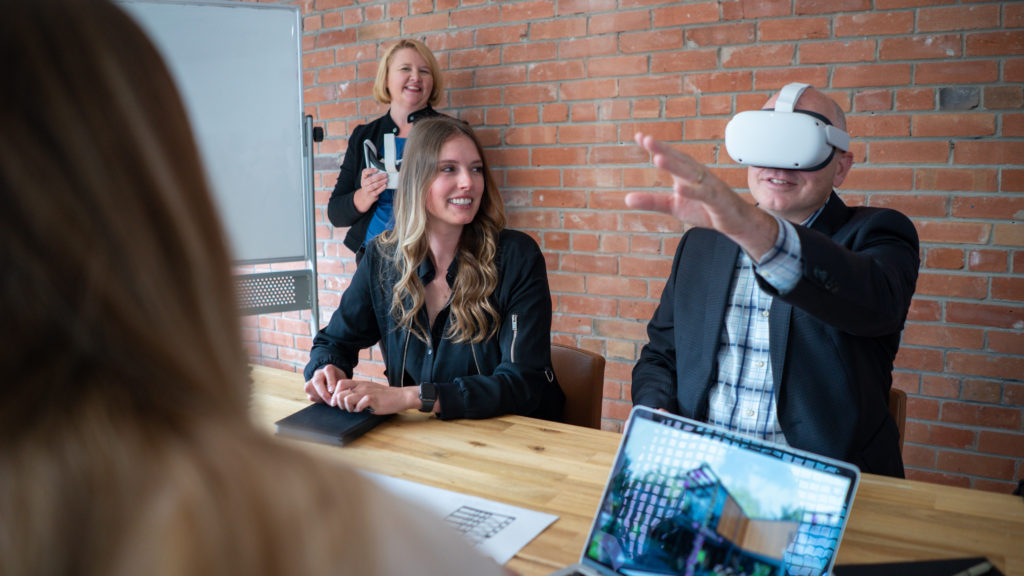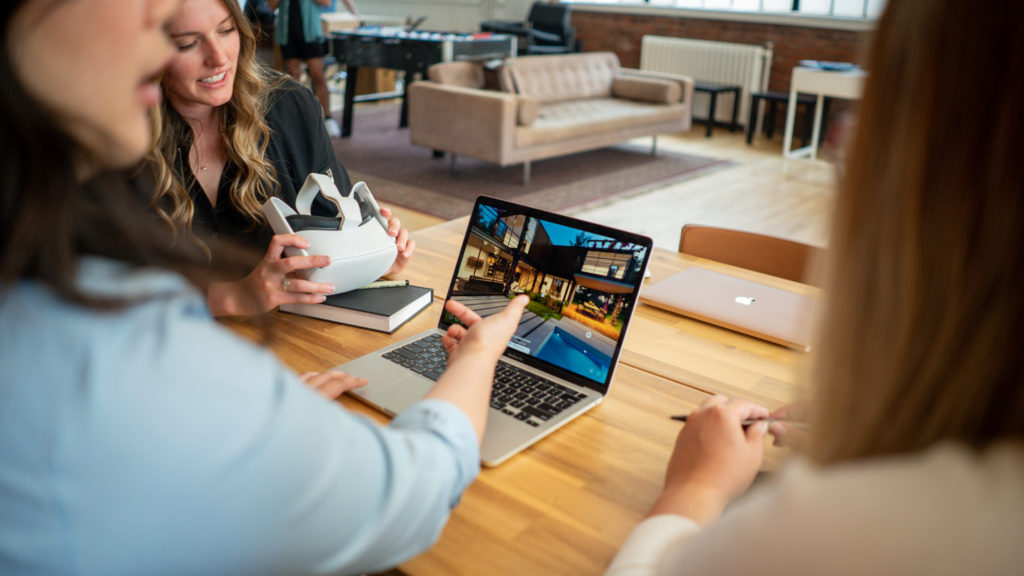Words and Photos: Rachel Chan, Marketing Lead at Yulio Technologies Inc.
Virtual Reality (VR) is a revolutionary tool that has transformed industries from retail to high-risk training and medicine and is currently making waves in the world of architecture and design. With its immersive capabilities, using VR in architecture and design empowers designers to share their vision immersively, tap into limitless space, and give their clients the most realistic sense of scale and space. While most designers can see its potential, one of the largest barriers to virtual experiences is knowing how to create compatible VR content and how to seamlessly integrate it into a designer’s workflow…all with limited time.
But why learn about creating VR experiences at all? While it is not yet mainstream and you may not yet have clients asking for VR previews, digital realities like VR offer benefits that we predict will become table stakes in client presentations. Most clients are making significant financial (and emotional) investments in design and it is maybe unfair to ask them to continue doing so from 2D plans, swatches and traditional methods. Instead, VR can offer:
Improved Visualization: Create a line of perfect communication between clients and designers. Most clients may not fully understand the size and scale of projects from line drawings and renders. Communicate with them in a way that leaves no room for the imagination.
Add an Interactive Element: Make the RFP process more enjoyable and keep your clients engaged and add a “wow” factor to your project. No one gets excited about a powerpoint!
Cost-Effective: With VR, what you see is what you get. Avoid costly mistakes or differences in vision before starting construction with your clients by reviewing spaces in VR. You’ll have the added benefit of knowing your client has seen and approved a full space.
Increase Efficiency: Reduce the back-and-forth between you and your clients and cut the number of meetings discussing changes needed between iterations. When clients see their space, you’ll get informed and instant feedback from your clients and finish projects faster. You’ll also cut down on the amount of time it takes to get sign-off and decisions for each project.
Creating VR-Compatible Content
While designers can, in theory, create their own VR experiences by manually rendering and stitching their scenes together, it is time-consuming and requires some specialized knowledge. By contrast, the simplest way to create content is to find a plugin that can create stereoscopic or monoscopic cubemaps. With just a few clicks, some plugins can turn your 3D or CAD models into fully explorable VR spaces.
If you’re hoping to increase the quality or photorealism of your design presentations, consider exploring solutions for cloud-based rendering that will fit with your workflows. Cloud rendering is a fantastic tool when it comes to some of the barriers designers face with rendering. Oftentimes, designers are stuck waiting hours for larger projects to finish rendering and having their computers virtually unusable to finish other tasks or to get started on other projects. With cloud rendering, upload your projects to the cloud and rid of all of these barriers. On top of receiving more photorealistic results, free up your computer to keep working and get your finished scenes in a matter of minutes. Combine cloud rendering with a tool that gives you back a navigable, ready-to-use VR scene and you’ll find creating that content for every client is a real possibility.

Incorporating VR Seamlessly into your Workflows
While seamlessly integrating VR will differ for every designer and every business, here’s a high-level overview of what to look for and consider when getting started.
Headsets
There’s a vast range of VR headsets, especially for business applications, so it’s important to consider how you envision using headsets in your processes. One of the most well-known headsets currently on the market (and our personal recommendation) is the Meta Quest 2 headset. The Meta Quest 2 is a powerful piece of VR hardware that can provide a stunning VR experience, transporting your clients within your spaces. Plus, it’s tetherless, which means that it doesn’t need to be plugged in to use just like your mobile devices – all you need to make sure of is that it’s charged. It’s portable and easy to take with you to any presentation, with virtually no set-up.
VR Platform
Especially for architects and designers, it’s important to find a platform that prioritizes visual storytelling. When shopping for a VR platform, make sure to look for ones that have an extensive list of enhancement features that will assist you in adding more information to your virtual spaces. In addition, look for the overall look and user interface of the platform. How intuitive is the platform to use? What will your clients see in the VR experience? Find a platform that is both sleek, functional and can tell your visual story better.

Presenting and Sharing Capabilities
And finally, and maybe most importantly, you need to know how you can get your projects in front of your clients both in-person and with remote meetings. Depending on the software you choose, your license may be tied to one computer. Or perhaps the file size is too large to easily send to your clients before and/or after your meeting.
We recommend looking for solutions that are hosted on a browser for maximum flexibility. Not only can you access all of your projects anywhere on any device, but sharing is also as simple as sending a URL link. This removes any concerns about file size or using any third-party services to share your projects with clients – you can easily share your projects within the same ecosystem.
When it comes to in-person meetings, be sure to be on the lookout for whether there is a simple way for clients to join the VR experience. Headsets do make VR significantly more immersive, so you’ll want something that makes it easy to get your experience on the headset, so your client can ‘enter’ the presentation with no hassle. Virtual reality has a reputation for being a ‘wow’ experience for one, but VR platforms are able to support a collaborative experience where multiple people can look at a space together. . Look into whether the platform has features that will include everyone in the room, and make it an experience for all.
Work, Communicate, and Present Better
With today’s solutions, integrating VR into your architecture or design workflow doesn’t have to be difficult, daunting or demanding but a simple, intuitive and beneficial addition to your processes. Plus, the tech for both hardware and software has advanced in such a way that you’ll likely see ROI in concluding a single project with virtual reality. So “wow” your clients, communicate clearer and win more projects with VR in architecture and design.
About The Author
Rachel Chan is a Marketing Lead at Yulio Technologies Inc., a leading VR presentation software for architects and interior design professionals.
Yulio is a one-stop shop for all you need for your next client-facing presentation. Create VR-compatible files using Yulio Jump, our cloud renderer, enhance them with our extensive line of features, and share or present your experience from your devices or in a VR headset. Discover how you can tell your visual stories better with Yulio – click here to learn more.














